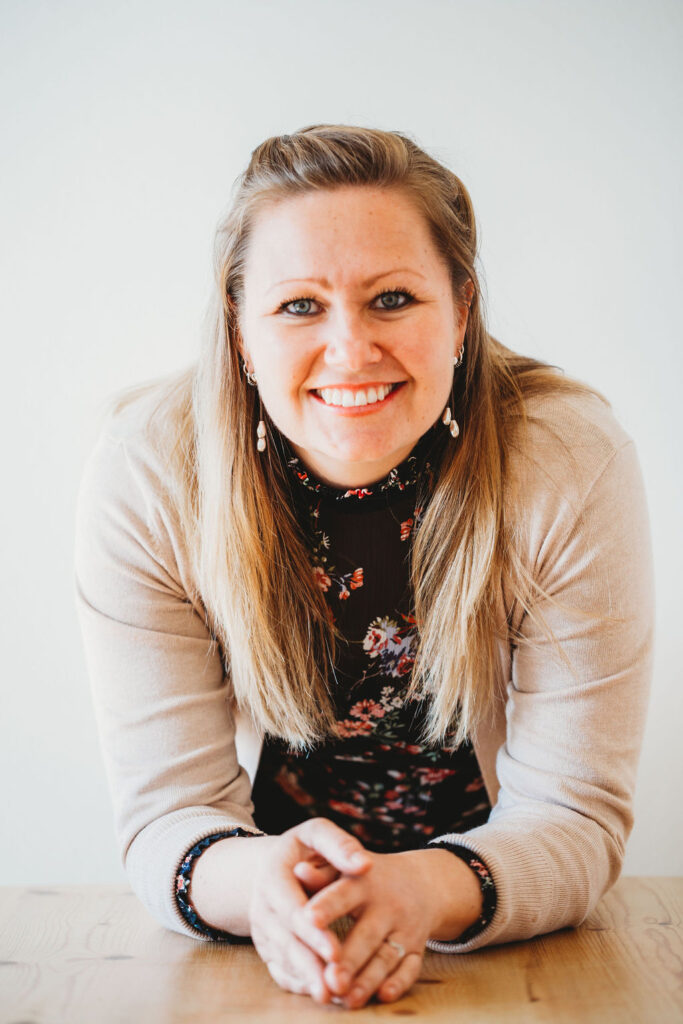Winging my presentation is never an option for me. It’s an insult to my audience.
Anne Pirkkanen

The Challenges of Presenting in a Second Language
Presenting in a second or third language can be extremely challenging. There’s often a gap between our agility, fluency, and confidence in our native language and those of “other” languages.
Anyone living or working abroad will know about this and can relate to how it feels. That sensation when you are looking for the right word and it’s just not there—or not immediately, even if you consider your language skills to be at least upper-intermediate or even advanced.
This concept of directly translating in verbal contexts can be energy-consuming and often impossible when dealing with expressions and set phrases. Clients often tell me they lose their flow in spontaneous conversations. It becomes more evident and slightly painful when talking in public or in meetings where our reputation is on the line.
The good news is that when preparing for presentations, we don’t need to improvise or act as simultaneous translators in our heads. We can prepare beforehand, regain power, and use those cool expressions to bring back the flow.
If you missed the guide on structuring your presentations, you can download it here.
When English is not your first language
When English is not your first language, the amount of vocabulary and language use are extra factors to consider when building this presentation or a message to deliver to the audience.
Does this mean double the work? Yes, for me, most of the time, it does.
I also feel the pain and do the extra work when preparing for my speeches, workshops, or meetings.
I live a trilingual life and work in bilingual environments. English is my native language for work even though
Finnish is my mother tongue. Spanish is my second working language and when I work in Spanish, I’d dare to say I have about 15% less confidence because of this gap.
How have I managed to handle this gap and work on my flow?
Simplify my message
By this, I mean the complexity of the words I use. I don’t try to translate directly; I recreate the idea with the vocabulary and expressions I have in my toolbox for that language right now.
Yes, it can be frustrating as you want to nail your presentation in English like you would in your mother tongue. We all want our audience to feel connected with us. We all thrive for impactful presentations whether it be in a meeting, interview or in a conference.
I’d argue that our styles change with the languages. I feel mine does, for sure. Delivering a workshop in English is not the same as in Spanish, even if the content is the same. I for sure don’t feel the same. Unless I’d deliver the same workshop 10 or 20 times. Expressions here can be learned for sure and naturally, the confidence builds up.
Write the script
I write the script since I feel a little insecure about the content and my delivery of how to communicate the emotion that I feel in another language. Then I practice, practice, and practice. My rule of thumb is to film three full dress rehearsals—maybe more if needed—not to mention the meditations and visualizations accompanying the practice process.
Winging it is NEVER an option for me. It’s an insult to my audience. I want to give something they can take away, not make a fool of myself. It’s my way of coping with uncertainty and facing my fears. Maybe you share some of the same ones: fear of messing up, fear of stumbling, fear of not being liked, and the list goes on.
Work on 7 core steps of Public Speaking
I always work through the 7 core steps to build my story for speaking in public. Regardless of the topic, new or old, and regardless of the language,
- Planning
- Structure
- Materials
- Practice
- Body language
- Three connectors with the audience
- Review and feedback
For more information on these 7 steps, you can read the full article here. 7 easy steps to improve your public speaking
So in a nutshell, don’t underestimate the time it takes to prepare for a meeting, presentation, conference or conversation in a second language. Whatever form of speaking in public it is, it needs preparation.
Secret Recipe for PSL = RESP
Here comes the secret recipe for improving your English presentation skills as a non-native speaker. Gain confidence and overcome challenges with expert advice in this recipe.
- Recreate your message by simplifying the text
- Look for 3-5 new Expressions/words that you feel comfortable with
- Write Script
- Practice, practice, practice
So I invite you to test the recipe and I would love to hear your feedback in the comments if you liked my recipe.
Related articles: The Emotional Journey of Fear, where does it come from? and Becoming a Speaker: Your Journey to Public Speaking, Career Growth and Opportunities
Until next time!
Cheers,
Anne Pirkkanen

Public Speaking & Communication Trainer
Bio: About Me
WEB: Version 2 of ME Communication
LinkedIn: Anne Pirkkanen
Bookings: Calendly




